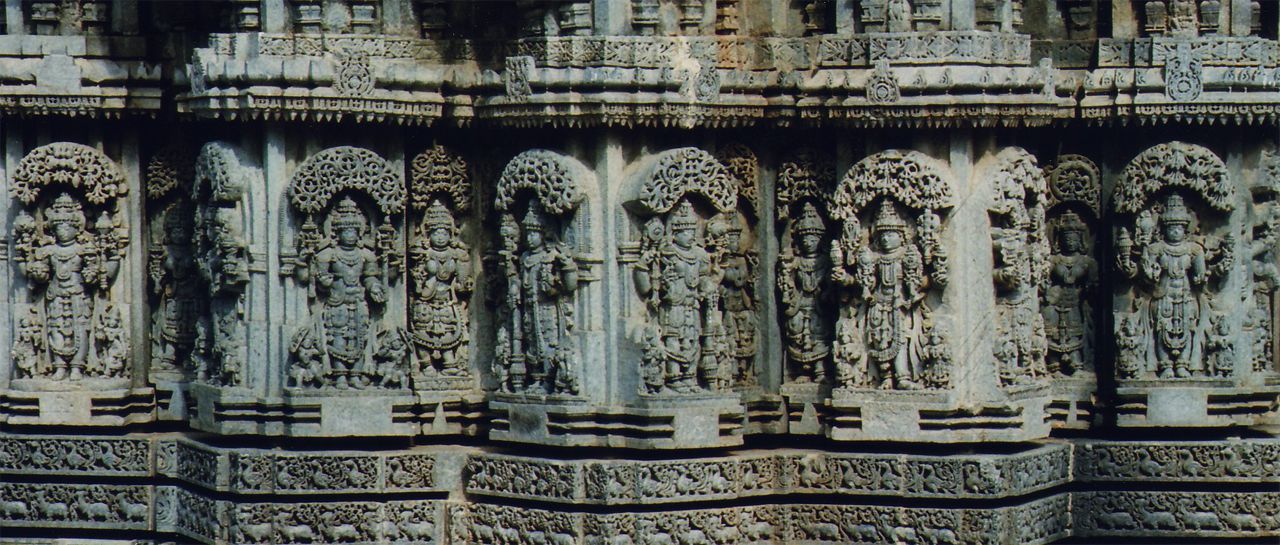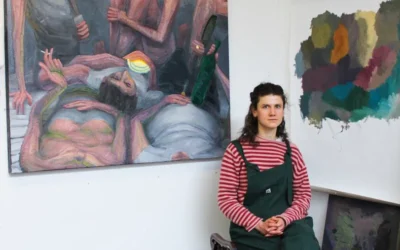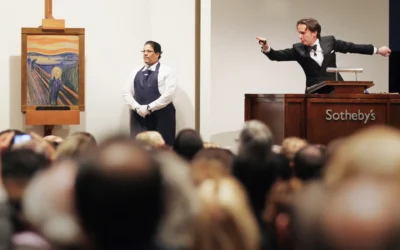Frieze and Multiplied mark the start of the art world calendar, which begins in earnest every October. They offer unique opportunities to have a multitude of art and people in one place at the same time. There exists for a fleeting moment in time, less than a week, a concoction of differing artworks, galleries from all over the globe and a mixture of people in the form of art world connoisseurs, new collectors and the general public. They are meeting spaces to foster new and emerging connections. At the very least it offers a cultural day out and offers the serious collectors the chance to add to their oeuvre. The fairs as a totality offer up a wide variety of artworks for the perusal of those in attendance, in terms of medium, style, time period and price.
In the space of the often meticulously designed booths, one can approach and engage in multiple conversations with gallery assistants and even the directors. Thus, one can find out more about the art or artworks and, of course, discuss prices. More deeply, one has the opportunity to get a firsthand detailed look at some never before seen, completely new or never before sold artworks. It is wise to formulate a bank of particular questions about the work and come back for a second look after the rest of the fair has been seen. The fairs are extended platforms for the galleries and institutions to partake in business, networking and to strengthen their collectors base by putting artworks and themselves out on the world stage to be seen by the masses. Other galleries can see what their competitors are showing and one can get a sense of the direction the art world is going in; they can see what is popular in other words. At the end of the fair one can begin to get a sense of market trends and which artists sell stronger than others. One can access which artists markets are emerging and which are fading based on individual gallery reports and when the overall sales figures, often sheepishly, are released after the fairs.
Frieze, the stand out art world event, occurs in Regent’s Park in a truly grand fashion. Two large sites house the two fairs, Frieze London and Frieze Masters, which are connected by a walking distance of around ten minutes with shuttle bus services and taxis also available. The event takes place over five days with an invitation only preview night, for more esteemed guests and collectors, followed by four full days which are open to the general public. For those who feel they could benefit from some guidance and advice bespoke tours are offered based on tastes and level of art world experience.
Frieze London, one of the world’s leading contemporary art fairs, is a powerhouse in that it focuses exclusively on contemporary art created by living artists mainly after the year 2000. It began in 2003 and was established by the founders of Frieze magazine, Matthew Slotover and Amanda Sharp. In 2015, over one hundred and sixty galleries from all over the world showed over one thousand artists showcasing the best contemporary art available. Thus, even though the fair takes place in London one gets a sense that the global art world is present. In 2015 the fair was split into three sections. The main section included commercial galleries of any age who represent artists, the Focus section included young galleries and emerging artists with solo and group stand proposals, and Live included active and performance based works, which were more experimental in feeling. Frieze London, especially with its Focus section, is imperative as it supports younger artists and galleries promoting them as the next wave coming through in the art world. This is a vital necessity.
Frieze London is an opportunity for the galleries to show their best art works by a single artist or by multiple. It is up to them to decide if they want to show artworks that have previously been shown over the past year or to show unseen work or even to show a new artist they have added to their rostrum. In other words, there are a plethora of approaches and tactics each gallery must decide upon before applying to be involved. Indeed, not every gallery makes it through the application process as over five hundred galleries applied in 2015. Frieze is momentous as it picks the best galleries and artists through such an intense selection process. In addition, an impressive program of talks, discussions and events in collaboration with Frieze magazine and supported by art world practitioners take place throughout the duration of the Frieze London and Frieze Masters.
Frieze Masters only shows artworks created before 2000, showing historical works from the ancient to modern time periods, including Old Masters, Post-War and even medieval works. Thus, both fairs combined cover extensive art period time lines. The perhaps overused phrase, ‘something for everyone’ holds particular legitimacy in these scenarios. Frieze Masters was established in 2012 along with Frieze New York, and although ticketed individually they have to be seen together as part of the overall Frieze experience. The same feeling is true of the sculpture park, which until 17 January 2016 will comprise of sixteen new and historical works by international artists. In 2015, Frieze Masters was made up of one hundred and thirty galleries in three sections, which were the main section, Spotlight and Collections. Spotlight included solo presentations by artists in the twentieth century and offered audiences the chance to see work that was made by artists during this time period throughout different parts of the world. The Collections section, which was completely new to 2015, contained eight museum quality presentations over a wide time period curated by Sir Norman Rosenthal. Thus, Frieze looks at an enormously wide spectrum of art looking at historical art through a contemporary and excitingly fresh lens.
Another significant strata of Frieze, because it is one of the world’s most important and famous art fairs, is the distinctive chance for newer galleries to establish themselves to new collectors and audiences, especially with the distribution of awards. Frieze has its own judging panel that award special commendations for the best booth presentations and then ultimately selects a stand winner. Appraisal is also rewarded with a more prime position and larger exhibition space at the next year’s fair.
Running at the same time as Frieze, Multiplied at Christie’s South Kensington is the United Kingdom’s first Contemporary Art Editions fair, showing mostly prints, photographs and three-dimensional works. Due to their very nature the works offer a more affordable alternative to Frieze and an ideal way to start a collection. In 2015, over forty exhibitors took part, such as art schools, galleries dedicated to emerging artists, specialised print studios and blue chip galleries.
At the heart of their ethos, Multiplied is dedicated to showing the ‘most interesting new art being made in editions today’. A wide range of work is shown questioning and challenging what prints, multiples and editions can encompass. Multiplied is significant in that it offers the chance for emerging artists, like at Frieze London but even younger, the chance to show and sell their work. In 2015, artworks were shown by the Royal Academy of Arts, which purposefully displayed works by established artists such as Tracey Emin and Grayson Perry alongside student works. Many of the proceeds go back to the institution supporting the younger generation of artists coming through.
Multiplied offers an immensely broad and exhilarating spectrum of works. One has the chance to purchase prints, which correlate directly from work shown at major events such as the Liverpool Biennial where artists are invited to revisit their significant pieces with a new work. Similarly, projects spaces such as Cubitt Gallery, founded in 1991, offer prints from exhibitions by curators who partook in eighteen-month curatorial bursaries. Another example is Stoney Road Press, which is a fine art press based in Dublin. They invite artists to work with them in their studio to try to realise their artistic vision and create a subsequent edition of works from their time there. Another example of the eclectic mix available at Multiplied, and an example of the diverse way in which the concept of an edition and of a print can be conceived, are the editions sold by McLean’s Artist Malts. This publisher of artists’ editions thinks about the prints in relation to the maturing process of whiskey, inviting the artists to select a distillery and create a work based around it, which are then all sold in limited editions each comprising of a whiskey bottle with an artistic label and a print.
Thus, Frieze and Multiplied cater to almost all tastes, displaying household names along with a particular focus on emerging artists coming through. With the diversity ever increasing in the form of special commissions, talks and new galleries, there is no doubt that as soon as one year’s fair ends the planning for the next one already begins. The date has already been set for the next Frieze, the 5th to the 7th of October 2016 and one expects Multiplied will position itself within this same time frame. They offer a form of unique intensity and focus with the opportunity to enhance, promote and foster new artists, collectors, galleries and connections that are imperative in the art world.



